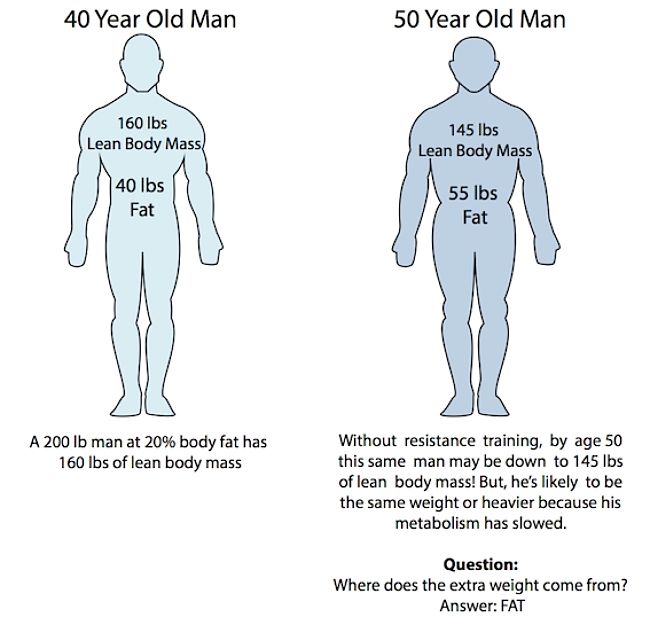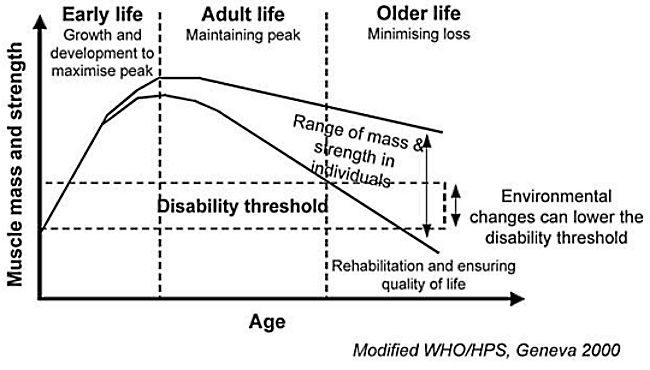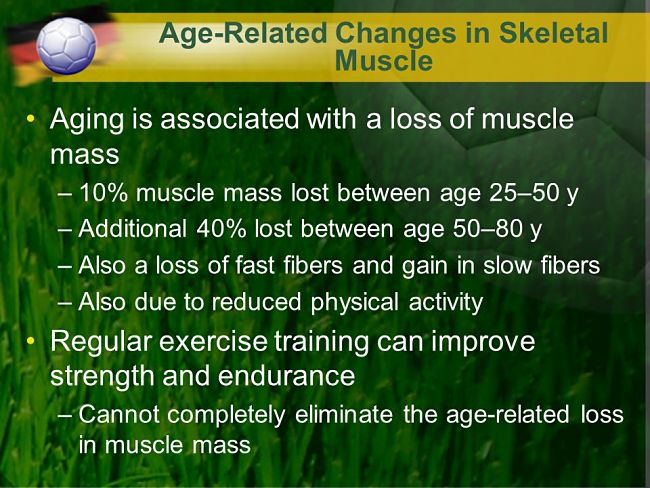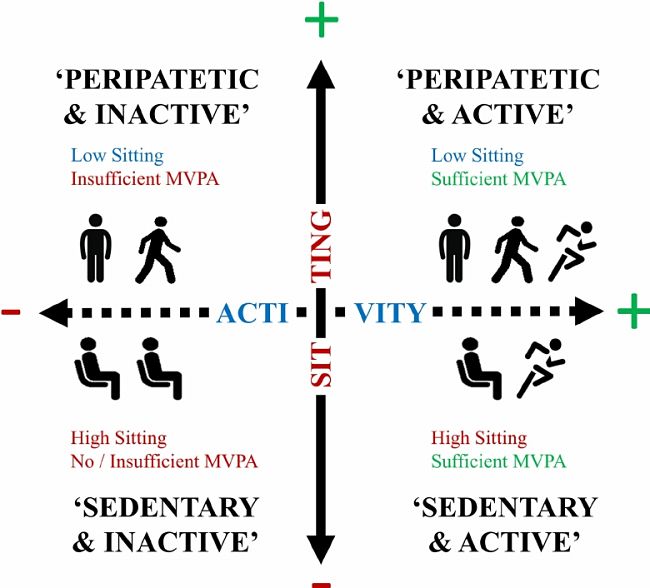Muscle Loss with Age - If you Don't Use It, You Will Lose It!
Aging is usually linked with a gradual loss of muscle strength and muscle mass, causing fragility, falls, functional decline, and a general feelings of weakness and loss of function for life's tasks and enjoyments. A recent study evaluated whether masters competition athletes who engage high levels of regular exercise also lose muscle mass and strength as they get older. The question for this study was whether the decline in muscle mass is inevitable with age, or was it a consequence of a sedentary less active lifestyle? Perhaps muscles waste away if they are not used in old age?
Many previous research studies had showed that most people older than 40 years of age, generally lose about 8 % or more of their muscle mass every 10 years. The rate of muscle loss increases to about 15% after the age 70 years. Losing muscle mass generally leads to a decline in strength, accidents, mobility and eventually loss of independence.
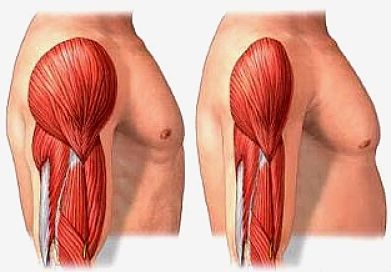
Loss of Calcium from bones also occurs with age and exercise helps to delay this loss as well.
The combined effect of weakened muscles and bones is an increased rate of falls an bone breakages.
An increase in fat infiltration into muscle with age has been well documented.
Loss of muscle mass and functioning has also been linked with premature death of some people.
The figures shown opposite show the loss of muscle mass with age, the loss of muscle power with age and declining maximum athletic performance.
There is growing evidence that masters athletes, many of whom train four to five times every week and competitions, may not show the same loss of total lean muscle mass and loss of strength as occurs with the more sedentary individuals.
Masters athletes and people who wok out at the gym continue to maintain a good quality of life and their functional capacity throughout their lives as the get older.
Most people assume that growing old leads to an inevitable decline from vitality and activity to frailty and a sedentary lifestyle.
This includes feeling generally weak, and unsteady, lacking self-confidence, loss of function and often the loss of independence.
These losses may be more related to lifestyle choices, including lack of exercises, sedentary living, depression and poor nutrition, than the loss of muscle and bone through the aging processes.
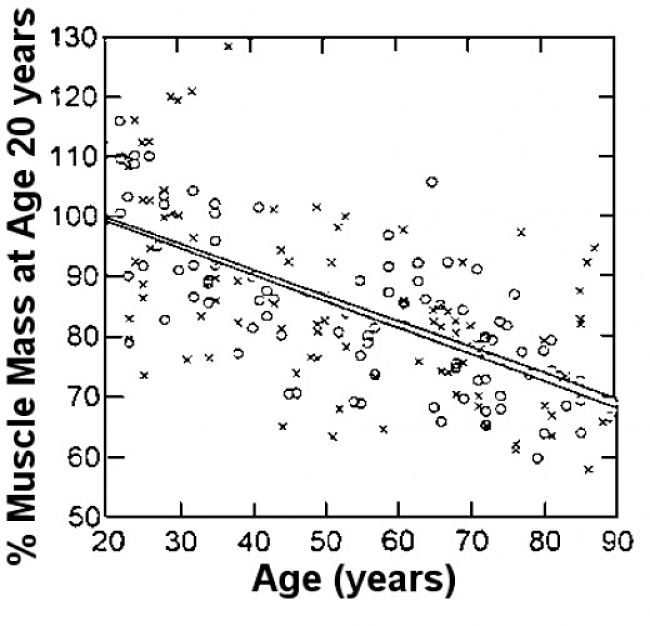
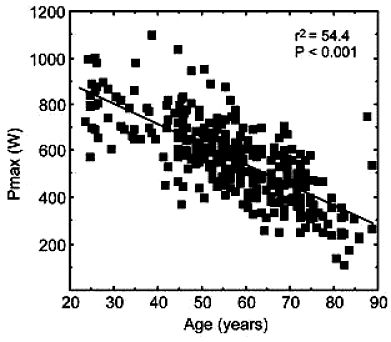
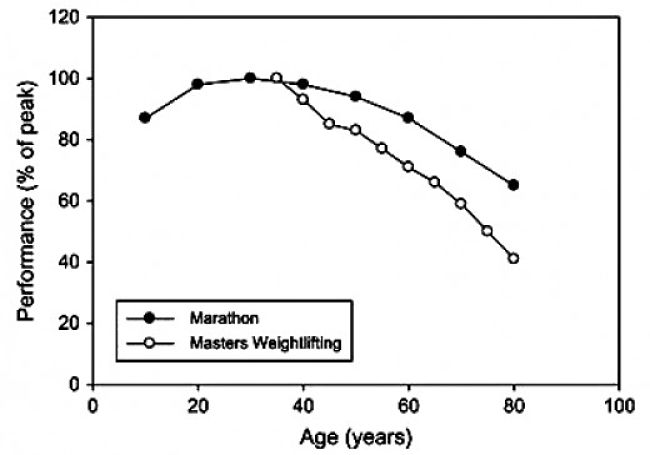
Studying masters athletes may show whether muscle decline is inevitable as people get older, or is it a simple consequence of people becoming less active as they get older.
Perhaps regular exercise may help to preserve both muscle mass and strength. If you don't use it you lose it!
A recent study, published in the journal The Physician and Sports medicine, examined recruited 40 competitive men and women cyclists, runners and swimmers, that ranged in age from 40 to 81.
All were very fit, and trained about 4 or 5 times a week and engaged in regular competitions.
The subjects in the study were asked questions about their general health and exercise routines.
The researchers measured:
- muscle mass,
- leg strength
- body composition, including the fat content of their muscles.
- MRI scans of muscles were taken and compared with sedentary control subjects
MRI Scans
The MRI scans in the image opposite highlight the differences between the muscles of athletes and sedentary males.
The image compares quadriceps MRI scans of a 70-year-old triathlete with that of a 74-year-old sedentary man and a 40 year old triathlete.
The differences are very obvious with the athlete retaining muscle mass whereas the sedentary control had much of their muscle mass replaced with fat.
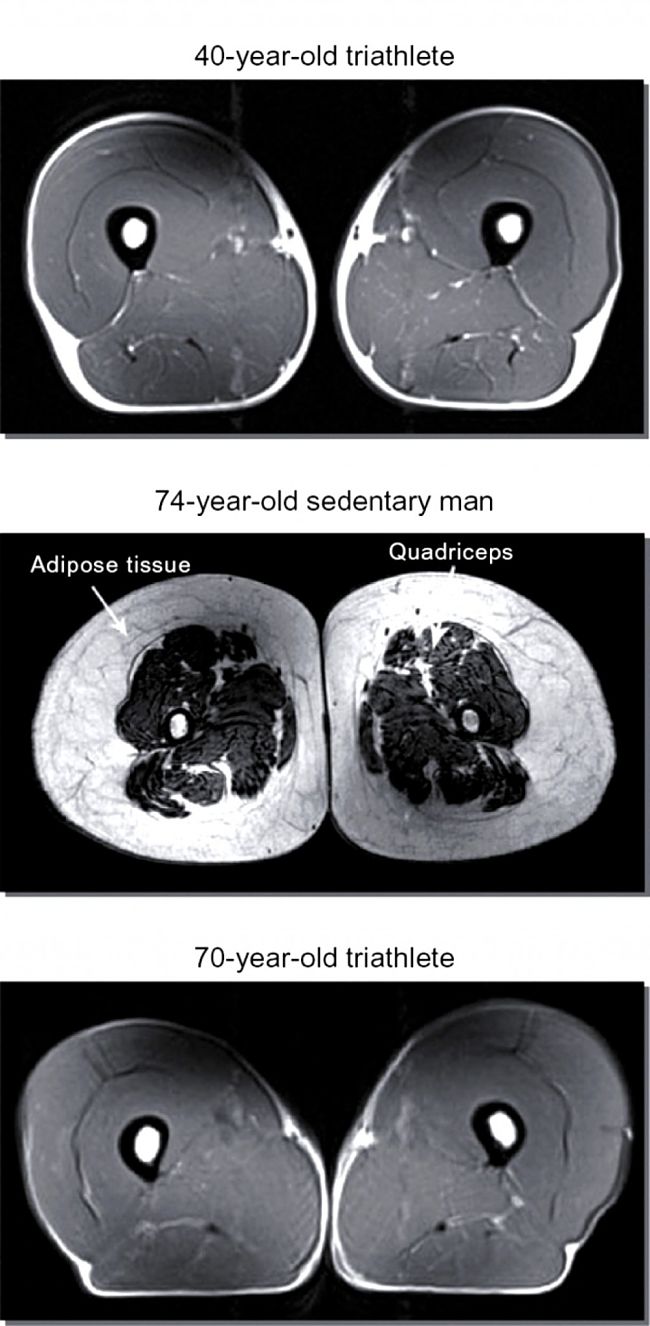
Muscle Mass Changes for Athletes
The results of the study showed that the athletes lost very little muscle mass with age.
The masters athletes, even when 70 and 80 years of age, had nearly as much thigh muscle mass as 40 year old athletes, with very little fat intrusion.
This compares with 8% loss rate per decade in the general population (shown above).
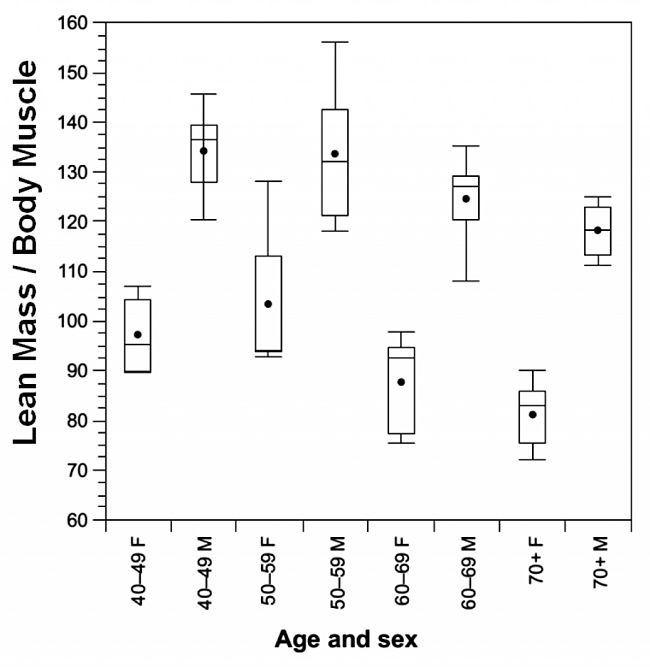
Fat in Muscles
There was only a low build up of fat in the muscles with age in the masters athletes.
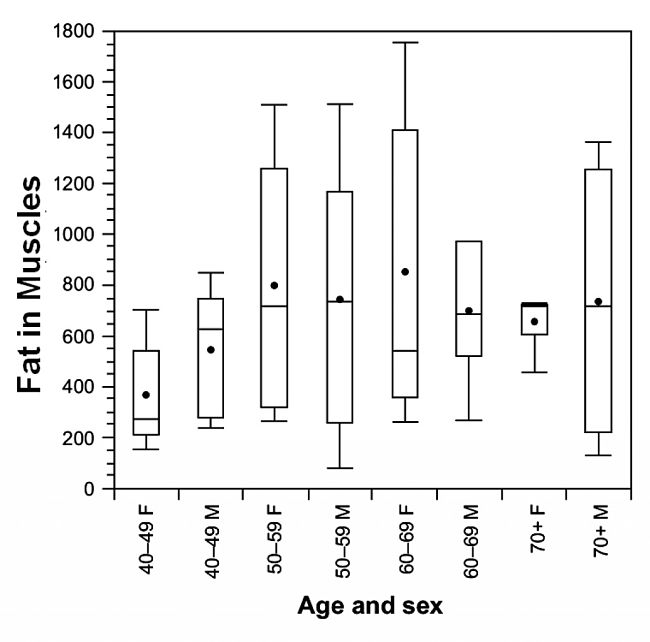
Muscle Strength
For the athletes leg muscle strength declined around 60 years of age in both men and women, but the loss of strength was small.
The masters athletes, even at 70 and 80 years of age, were almost as strong as those in their 60s.
This contrasts with the steady decline in strength seen in the general population.
It remains to be seen whether similar benefits for exercise are shown by people who are not athletes, or who take up exercise when they are in their 40s or 50s, or older. The general research suggests that this would be the case, but it remains to be tested. Gym sessions for older people has been known to be very beneficial.
Further research is needed to understand the type of exercise that are best for men and women. In particular, it is not clear whether endurance type exercises, or aerobics are best for muscle retention, or whether weight training or gym workouts, might be as good or better. The thresholds, and minimum levels of activity for benefit are unknown. It is not known how much exercise is required to maintain various muscles in different parts of the body, or how intense the exercise it needs to be, or the mechanisms involved.
The study concluded that it is clear that some activity is better than none, and probably that more exercise is probably much better than less, but the thresholds are unknown.
The major conclusion from the study is that those who undertake regular exercise can control the aging process, and keep it under control, with many benefits for their health and lifestyle.
Through regular exercise, you can keep your muscle mass, and retain your strength and agility and so avoid the decline from vitality to frailty, which is not an inevitable outcome of ageing.
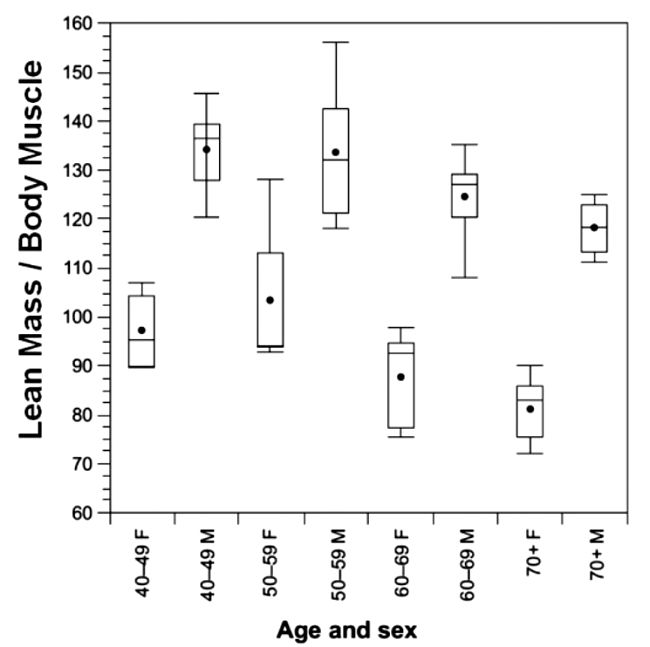
Related Articles
=> Benefits Sports Massage to Relieve Muscle Aches - Why Massage Works
=> Watermelon Juice Relieves Post-Exercise Muscle Soreness, Other Health Benefits
=> Best Way Build Muscle Fast - Training Tips, Schedules, Routines
=> Stop Leg Muscle Cramps and Foot Cramps, Tips and Home Remedies
=> How Do You Stay Injury Free When Running, Training for Events
=> Tips for Achieving Fitness Training Goals from Elite Athletes
=> Benefits Interval Training, Best High Intensity Workout Programs
=> Training Plateau Definition - Great Tips for Breaking Through Exercise Plateaus and Barriers
=> Best Way Build Muscle Fast - Training Tips, Schedules, Routines
=> Callisthenics with Resistance Band Training
If you Don't Use It - You will Lose It!
